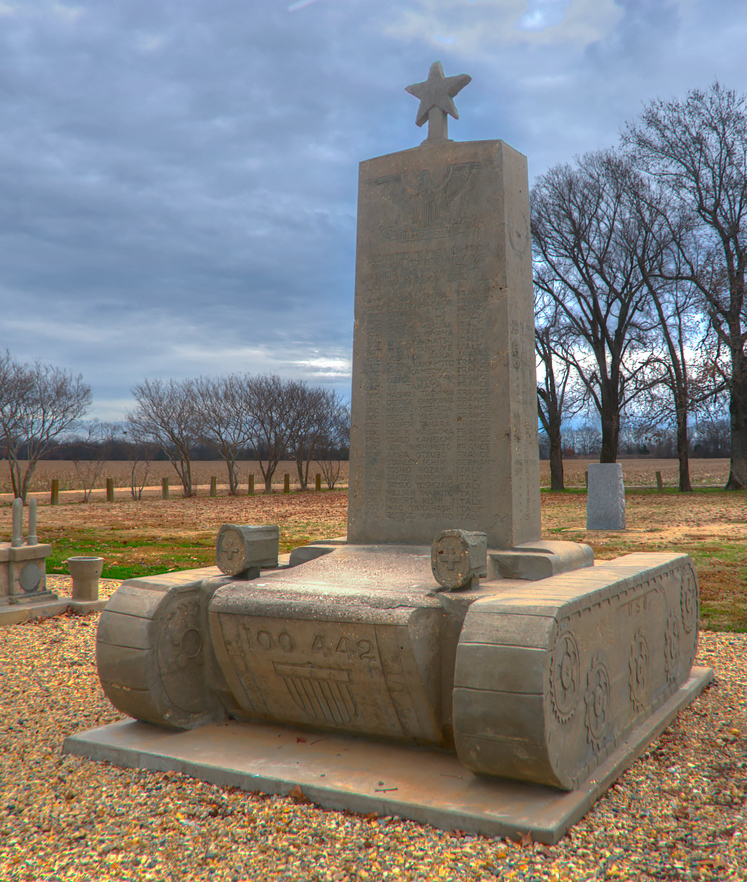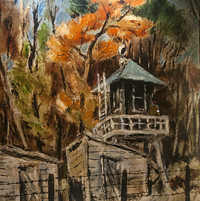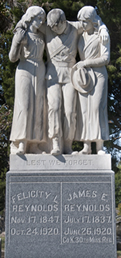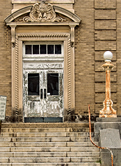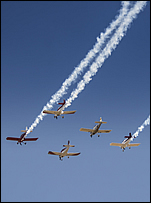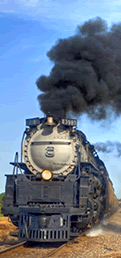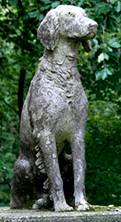In Honor of the Nisei
Facing westward, this tank-like structure at the Rohwer War Relocation Center Cemetery, a national historic landmark at Rohwer, Arkansas, is a memorial to fallen members of the 442 Regimental Combat Team, part of the Fifth Army in World War II, who were residents of the “War Relocation Center” at Rohwer. The 442nd, composed of Nisei soldiers (individuals of Japanese descent), was the most highly decorated American unit that fought for Uncle Sam in World War II.

Sunday, December 29, 2013
Pine Buff, Arkansas
In the aftermath of the Japanese attack on Pearl Harbor on December 7, 1941, President Franklin D. Roosevelt issued Executive Order No. 9066 on February 19, 1942. The order, in general, decreed that individuals of Japanese ancestry should sell or give away what they owned and prepare to be relocated. There was no wiggle room in the edict.
As a result of this order, more than 120,000 individuals of Japanese ancestry were rounded up and detained in temporary assembly areas while the U.S. Government built “War Relocation Centers” in remote areas. These encampments consisted of barracks, mess halls, communal bathing facilities, and other structures, which facilitated a small closed community. Most of the people forced to live in these facilities were citizens of the United States of America.
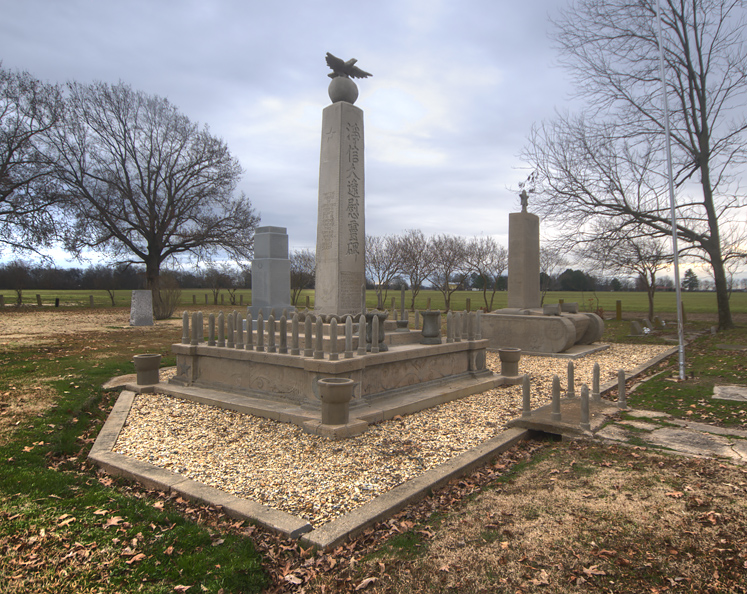
Monuments to the Ancestors
The cemetery stands on the site of the old center, which is now an agricultural field. These are the main monuments of the site. The edifice in the foreground honors all those interred at Rohwer.
After about six months of construction and preparation, the “centers” were ready for occupancy. Quickly, the detainees were loaded on trains and moved to their new places of residence, two of which were here in LA (lower Arkansas). The “centers” were at Rohwer, Arkansas, and Jerome, Arkansas, both of which were little more than miniscule.
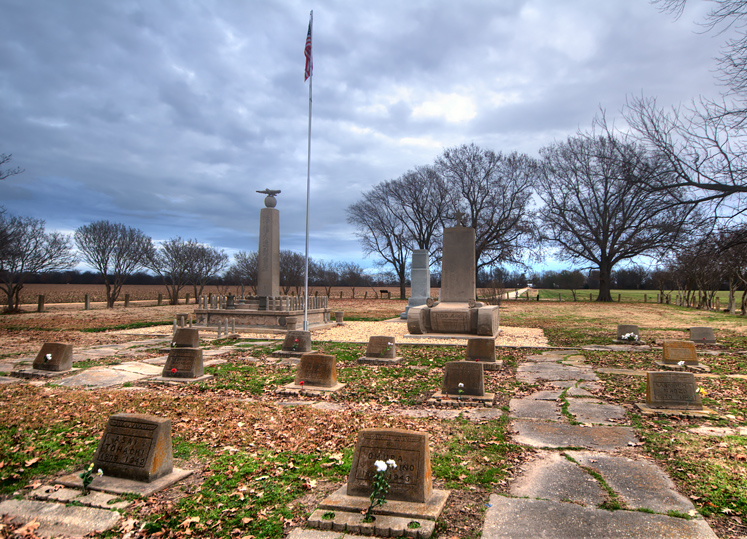
A Normal Community
Monuments in the cemetery are masonry, not marble, which probably means they were cast on the site. The age-range of those interred reflects a normal community. The oldest one I saw was the final resting place of an individual born in 1860, the year before the War Between the States started. The death date was 1943. There were also markers bearing a family name and the word “infant.”
'Go for Broke'
As the war raged on, despite their cavalier treatment, and after being notified of the opportunity, men in the centers indicated a desire to fight for their country, giving rise to their participation in World War II in the 442 Regimental Combat Team. The motto of the of the unit was “Go for Broke.” As the most decorated unit in the conflict, their awards included:
- 21 Medals of Honor
- 29 Distinguished Service Crosses (including 19 Distinguished Service Crosses which were upgraded to Medals of Honor in June 2000)
- More than 334 Silver Stars with 28 Oak Leaf Clusters* (*in lieu of second Silver Star)
- One Silver Star was upgraded to a Medal of Honor in June 2000
- Seven Presidential Unit Citations
- One Distinguished Service Medal
- Seventeen Legion of Merit Medals
- Fifteen Soldier's Medals
- More than 848 Bronze Stars with 1,200 Oak Leaf Clusters* (*in lieu of second Bronze Star)
- One Air Medal
- More than 4,000 Purple Hearts
- 36 Army Commendations
- 87 Division Commendations
- Over 20 French Croix de Guerre with 2 Palms* (*in lieu of a second award)
- Two Italian Crosses for Military Valor (Croce Al Merito Di Guerra)
- Two Italian Medals for Military Valor (Medaglia De Bronzo Al Valor Militaire)
- One Soldier's Medal (Great Britain)
Meanwhile, back at home, their families were living in non-partitioned barracks, bathing in communal facilities, and eating in a mess hall — not exactly the American dream for family life.
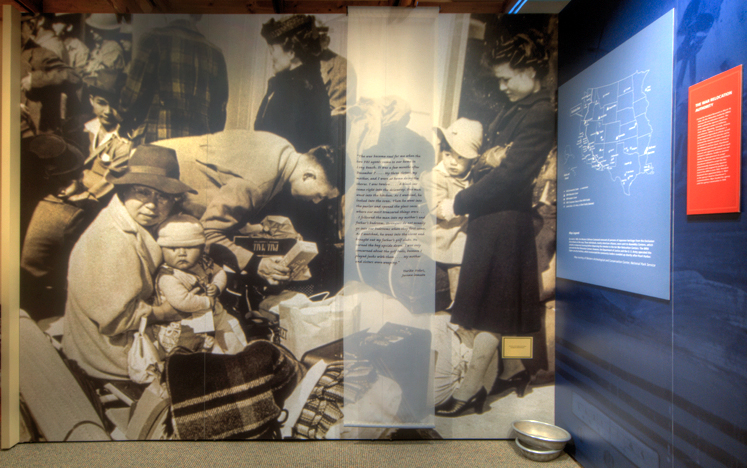
'Two FBI Agents Came to Our Home'
A large photo in the museum shows detainees readying themselves to board the train to their “Relocation Center.” The caption for the photo reads: “The war became real for me when the two FBI agents came to our home in Long Beach. It was a few months after December 7. My three sisters, my mother, and I were at home doing chores. I was 12. A black car came right into the driveway. One man went into the kitchen. As I watched, he looked in the oven. Then he went into the parlor and opened the glass cases where our most treasured things were. I followed the man into my mother’s and father’s bedroom. Strangers do not usually go into our bedrooms when they first come. As I watched, he brought out my father’s golf clubs. He turned the bag upside down. I was only concerned about the golf balls because I played jacks with them. My mother and sisters were weeping.”
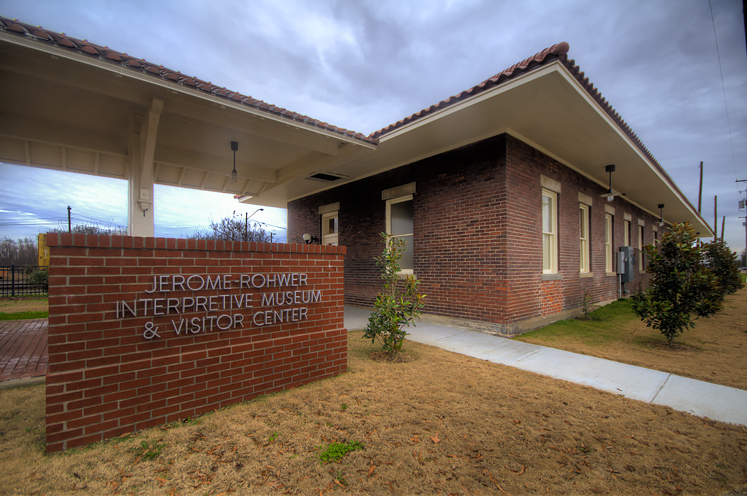
A Wellspring of History
The Jerome-Rohwer Interpretative Museum and Visitor Center in McGehee, Arkansas, provides a wellspring of information, not only on the centers for which it is named, but also on the entire history of the executive order, how it was implemented, and how detainees were released. I was fortunate to have Heidi Reed of the museum staff to be my personal guide through the facility. She was knowledgeable and communicated the story well.
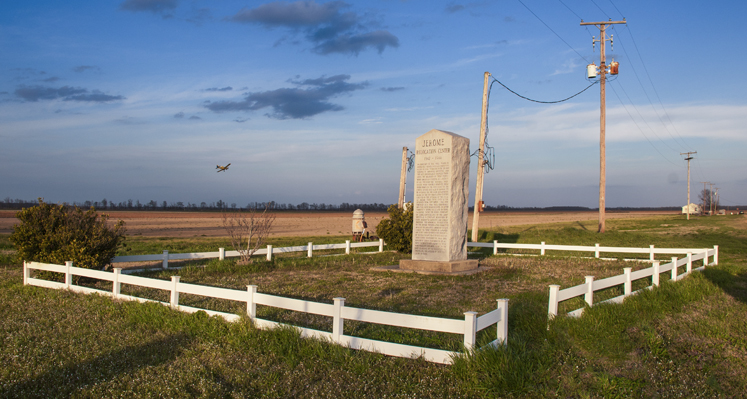
The Monument at Jerome
There’s less left of the center at Jerome than there is at Rohwer. This monument and the smoke stack from the center’s power plant are all that is left. This memorial is on US Highway 165 in plain sight, so it is hard to miss.
Although the acts foisted on these American citizens by their government was terribly wrong and can never be fully righted, by mutual acceptance, the event now appears to be viewed as an event in history from which we can all draw lessons in decision making, deportment. and the difference between right and wrong. The museum and information center in McGehee is a manifestation of this mindset. It was dedicated in April of this year. George Takei, better known as Lieutenant Hikaru Sulu on the original Star Trek television series, and his family were detainees at the Rohwer Center. He was active in bringing the museum to fruition and was a speaker at the dedication. Click here for a story about the dedication. And never forget.



Nikon D300, all. Tank memorial, tripod mounted, ISO 200, AF-S Nikkor 18-200mm f3.5-5.6 ED G, 1/100 @ f3.5; View of four monuments, tripod mounted, ISO 200, Sigma 10-20 f4-5.6 EX DC HSM, 1/40 @ f4.5; Cemetery; tripod mounted, ISO 200, Sigma 10-20 f4-5.6 EX DC HSM, 1/20 @ f4.8; Large photo in museum, tripod mounted, ISO 200, Sigma 10-20 f4-5.6 EX DC HSM, 1/13 @ f4.8; Museum exterior, tripod mounted, ISO 200, Sigma 10-20 f4-5.6 EX DC HSM, 1/80 @ f4.5, Jerome, tripod mounted, AF Nikkor 18-135mm, f3.5-5.6, 1/250@f8. Post processed with HDR Express and Photoshop CC.

But wait! There's more....
See more pictures,
including this painting
by a Jerome detainee
and find out more
about the relocation at
Weekly Grist for the Eyes and Mind.
Low-fat, all-natural, non-threatening, cholesterol-free — click and go.

